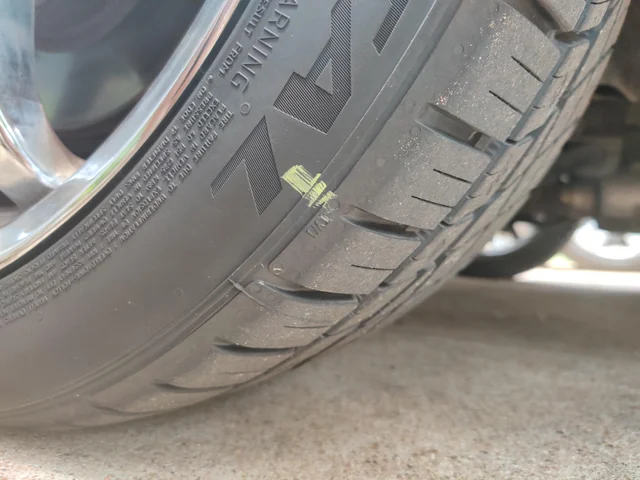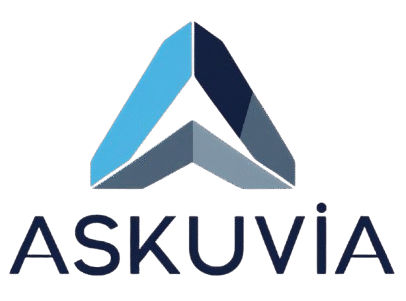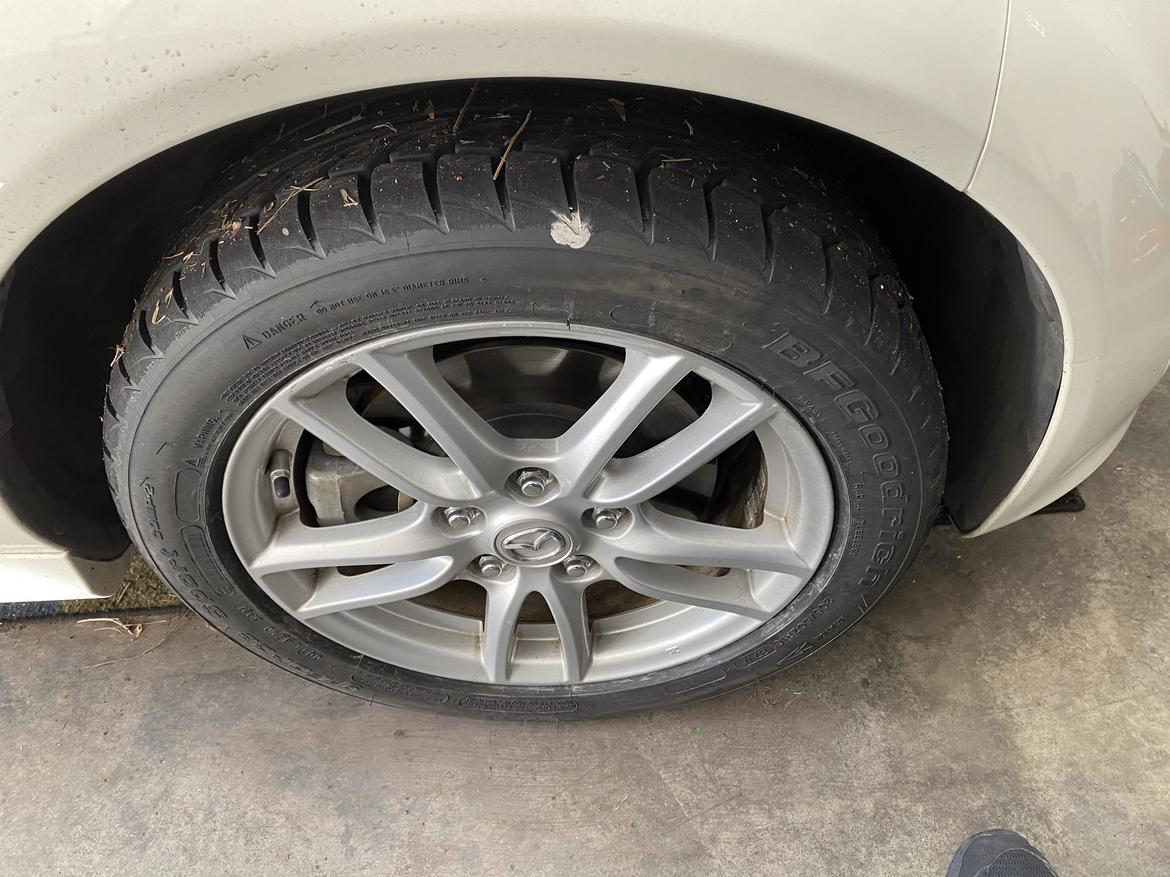Parking enforcement, traffic control, and vehicle management rely on a variety of methods to track compliance. One of the most traditional methods is tire chalking. If you have ever returned to your vehicle and noticed a white or yellow chalk mark on your tire, you may have wondered what it means. This guide explores in detail what chalk on tires does, why authorities use it, how it works, its legality across regions, and what modern alternatives are replacing it.

What Does Chalk on Tires Do?
Chalk on tires acts as a time-tracking tool. Parking officers apply a visible chalk mark on the rubber surface of vehicle tires. The purpose is simple: to identify whether a vehicle has been moved within a specific time frame.
-
If the chalk line is still in place when the officer returns, the car has not moved.
-
If the chalk line is disturbed, the car has been moved and no violation is recorded.
This method enables municipalities to monitor parking limits in zones without meters or sensors.
How Tire Chalking Works Step by Step
-
Mark Application: A chalk stick is used to place a line on the tire, usually across the tread or sidewall.
-
Time Logging: The officer records the time and location of the mark.
-
Observation Period: The officer leaves the area for the allotted time limit.
-
Verification: On return, the officer checks whether the mark is intact.
-
Ticket Issuance: If the mark remains and the vehicle is over the limit, a citation is issued.
The entire system is manual and inexpensive but requires accuracy and repeat patrols.
Why Cities Use Tire Chalking
Cost Efficiency
Tire chalking costs almost nothing beyond chalk supplies and officer labor.
Simplicity
It requires no advanced equipment or technology. Training is minimal, making it accessible for small towns and local governments.
Effectiveness in Low Tech Environments
In areas without digital parking meters or plate recognition, chalking provides a straightforward enforcement solution.
Does Chalk Damage Tires?
Chalk is a temporary marking substance. It does not chemically bond with rubber compounds. Automotive specialists confirm chalk is non-abrasive and non-corrosive. Once wiped away, it leaves no permanent trace. Therefore, chalk does not damage tires and is considered safe.
Advantages of Tire Chalking
-
Low cost: Materials are inexpensive.
-
Quick application: Officers can mark many cars rapidly.
-
Non-invasive: Harmless to vehicles.
-
Adaptable: Works in both urban and suburban areas.
Disadvantages of Tire Chalking
-
Weather vulnerability: Rain or snow erases marks.
-
Tampering: Drivers can remove marks manually.
-
Labor demands: Officers must patrol twice.
-
Legal risks: Courts in some jurisdictions have declared it unconstitutional.
Legal Status of Tire Chalking
United States
The most significant debate occurs in the U.S., where tire chalking has been legally challenged under the Fourth Amendment.
-
Taylor v. Saginaw: The Sixth Circuit Court ruled that tire chalking is a search and violates constitutional protections.
-
Contrasting Rulings: Other circuits have upheld chalking, stating it is minimal and non-intrusive.
This conflict means chalking is banned in some states but still practiced in others.
Other Countries
-
United Kingdom: Some councils phased out chalking in favor of camera enforcement.
-
Canada: Many smaller municipalities still use chalk, while larger cities use plate recognition.
-
Australia: Councils often mix chalking with digital scanners.
Table: Tire Chalking vs Alternatives
| Feature | Tire Chalking | License Plate Recognition (LPR) | Parking Apps & Sensors |
|---|---|---|---|
| Cost | Very low | High upfront investment | Medium to high |
| Accuracy | Moderate | High | High |
| Weather Resistance | Poor | Excellent | Excellent |
| Labor Requirement | High (manual patrols) | Low | Medium |
| Legal Status | Disputed in U.S. | Generally accepted | Accepted |
| Privacy Concerns | Low | High (tracking plates) | Moderate |
Modern Alternatives to Tire Chalking
License Plate Recognition (LPR)
Cameras scan plates and timestamp data. Officers then match time records to detect overstays.
Parking Apps
Mobile apps allow users to log sessions, giving cities digital timestamps without manual marks.
In Ground Sensors
Sensors embedded in pavement detect vehicle presence and send real-time occupancy data.
Public Reactions
Motorists often perceive chalking as invasive. The visible mark signals active monitoring, which can feel like property interference. Yet many also appreciate its low-tech nature compared to constant digital surveillance.
Special Applications Beyond Parking
Chalk is not only used by parking officers. Motorsport and off-road enthusiasts also employ chalk on tires to measure pressure and road contact.
-
Contact Patch Test: Chalk applied to tread reveals tire-to-road alignment.
-
Pressure Adjustment: Uneven wear patterns indicate over-inflation or under-inflation.
Case Studies
Ann Arbor, Michigan
Central to Taylor v. Saginaw, Ann Arbor discontinued chalking after lawsuits and settlements. The city moved to license plate recognition.
San Diego, California
San Diego shifted to handheld plate scanners, improving efficiency and reducing errors.
Toronto, Canada
Toronto phased out chalk in high-density areas, adopting digital patrols. Smaller areas still rely on chalk.
Pros and Cons for Municipalities
Pros:
-
Extremely cheap method.
-
Minimal training needed.
-
Effective for smaller cities.
Cons:
-
Exposure to lawsuits.
-
Inefficient compared to digital tools.
-
Not future-proof.
Better Understanding
Reasons Cities Are Abandoning Tire Chalking
-
Court rulings declare it unconstitutional in some states.
-
Weather reduces reliability.
-
Technology offers more precise tracking.
-
Labor costs are high over time.
Benefits of Switching to Digital Enforcement
-
Provides clear evidence during disputes.
-
Reduces manual effort for officers.
-
Integrates with citywide parking systems.
-
Enhances compliance and revenue.
Best Practices for Drivers
-
Check Local Laws: Know if chalking is legal in your city.
-
Understand the Mark: A chalk mark signals your parking time is monitored.
-
Contest Wisely: If chalking is unconstitutional locally, challenge tickets.
Frequently Asked Questions (FAQs)
1. Why do parking officers put chalk on tires?
They mark tires to measure how long a vehicle remains in one place. It helps enforce parking limits.
2. Does chalk damage vehicle tires?
No. Chalk is non-toxic and temporary. It does not damage tire rubber.
3. Is tire chalking legal everywhere?
No. In the United States, some courts ruled it unconstitutional. In other countries, it is still widely used.
4. What happens if I wipe off the chalk?
Technically, officers may still track the time by other methods. Tampering may not always prevent a citation.
5. What are alternatives to chalking?
Cities now use license plate recognition, parking apps, and in-ground sensors.
6. Why is chalking controversial?
Courts argue it counts as a physical trespass and therefore a search under constitutional law.
7. Do private property owners use tire chalking?
Yes. Universities, hospitals, and private lots sometimes chalk vehicles to monitor compliance.
8. Can chalking be used in racing?
Yes. Racing teams chalk tires to measure tread contact and adjust pressure.
9. Will tire chalking disappear?
In larger cities, yes. Technology is replacing it. Smaller municipalities may continue using it.
10. How should drivers respond to chalk marks?
Drivers should understand it is part of parking enforcement and check if local laws permit it.
Learn More: What Is a 14 Out of 20? Complete Guide With Context, Conversions, and Global Meaning
Thank You for Noting: The Complete Guide to Correct Usage
Conclusion
Tire chalking is a low-cost, manual system used to measure how long vehicles remain parked. It leaves no damage on tires but has become legally controversial in some regions, especially in the U.S. While some courts classify it as unconstitutional, many municipalities still use it. Modern alternatives like license plate recognition, parking apps, and sensors are steadily replacing chalking.

